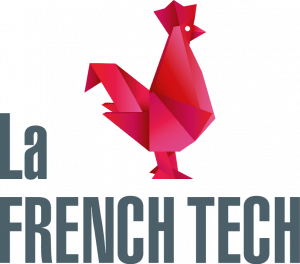How to choose between the Sole Proprietorship, the Self-Enterprise and the EIRL?
You are alone in your activity? Do you want to test your market before jumping into the deep end of entrepreneurship?
Whether your activity is a sole proprietorship, liberal, commercial, artisanal or agricultural, you must know and choose the status that will suit you best in order to succeed in your business.
In a very simple and didactic way, LEGALCITY provides you with a table that summarizes and synthesizes the essential information you need to know in order to make the right choice.
LEGALCITY offers you an online form and support from a formalist for your company creation.
If you need legal information, you can contact the CCI, the Boutiques de Gestion or ask a question online to a LEGALCITY lawyer who will answer you within 24 hours by phone.
Within the framework of your creation of an Individual Company, you can also choose the accompaniment of a specialized lawyer who will secure your specific personal situations.
See our business creation offers
The table below will allow you to choose the legal and fiscal status best suited to your individual situation:
| Sole proprietorship (EI) | Auto entrepreneur (AE) | Sole proprietorship with limited liability (EIRL) | |
|---|---|---|---|
| Who can create the entity? | Only a natural person can carry on an activity in his or her own name. The person becomes an individual entrepreneur | See Sole proprietorship (EI) | See Sole proprietorship (EI) |
| The activity | The company's purpose can be related to all commercial, liberal, artisanal or agricultural activities that require little investment (excluding industrial activities) | All commercial, liberal (with some exceptions) or artisanal (with some exceptions) activities requiring little investment and whose annual turnover does not exceed the limits of the micro-enterprise regime | The company's purpose can be related to all commercial, liberal, artisanal or agricultural activities that require little investment (excluding industrial activities) |
| Share capital and contributions | The notions of share capital and contributions do not exist in these structures | See Sole proprietorship (EI) | See Sole proprietorship (EI) |
| Responsibility of the manager | The sole proprietor is indefinitely liable for business debts on all his personal assets except his main residence (both in civil and criminal law). There is a possibility to protect other property not used for business purposes if a declaration of unseizability is filed with a notary. The choice of matrimonial regime is important in order not to commit the assets of the spouse | See Sole proprietorship (EI) | The sole proprietor limits his financial responsibility to a professional asset that he determines (declaration of assignment) |
| Social regime of the manager | Self-employed person | Self-employed person | Self-employed person |
| Tax treatment of the executive's remuneration | The profit of the company is taxed at the Income Tax (IR) through the personal declaration of the entrepreneur (declarations 2042 and 2042 C-PRO). Any deductions made by the entrepreneur are included in the profit, which is therefore subject to IR. They are therefore not taxed again. | See Sole proprietorship (EI) | If the company is subject to IR, the profit (which includes the operator's deductions) is entered on the operator's personal declaration (2042 and 2042 C-PRO declarations) and subject to IR. If the company is subject to corporate income tax, the manager's remuneration is taxed as wages and salaries (reported on the entrepreneur's personal tax return) |
| Obligations related to the operation | Opening a business bank account is highly recommended | Opening a business bank account is highly recommended | Opening a professional bank account. Keeping of accounts. Publication of the accounts at the clerk's office of the Commercial Court |
| Formalities of creation | Declaration (form P0); for BIC activities, the Chamber of Commerce and Industry (CCI); for craft activities, the Chamber of Trades and Crafts; for agricultural activities, the Chamber of Agriculture; for independent or liberal activities, the URSSAF; No filing of legal statutes | See Sole proprietorship (EI) | See " Sole proprietor " but also a declaration of assignment of the professional assets to be registered with the competent business formalities center |
| Tax reporting formalities | For the result: at the end of each accounting period and depending on the applicable tax system, electronic filing of a declaration of results and its appendices and reporting of the result on the declaration n° 2042-C-Pro. For VAT: depending on the tax liability and the applicable tax regime (monthly, quarterly or annual), electronic filing of declarations. For the CET: before December 31 of the year of creation, filing of form n°1447-C. Depending on the turnover, filing of form n° 1330 in case of taxation to the CVAE | Carrying forward the amount of the turnover or the receipts on which an abatement will be automatically applied on the personal income tax return of the micro-entrepreneur (2042 C-PRO). No balance sheet to be provided. Possibility to benefit from the payment in full discharge of the income tax.
New in 2018: VAT liability is now compatible with the micro tax/social regime. For VAT liability and CET, see "Sole trader". | For the result: at the end of each accounting period and depending on the applicable tax system, transmission of a dematerialized declaration of results and its appendices. If the EIRL's results are subject to income tax, the amount of the result is reported on form n° 2042-C-Pro. For VAT: depending on the tax liability and the applicable tax system (monthly, quarterly or annual), electronic filing of the declarations For business property tax: before December 31 of the year of creation, filing of form n°1447-C |
Going further:
The statutes by Economie.gouv : https://www.economie.gouv.fr/entreprises/statut-entreprise-individuelle




